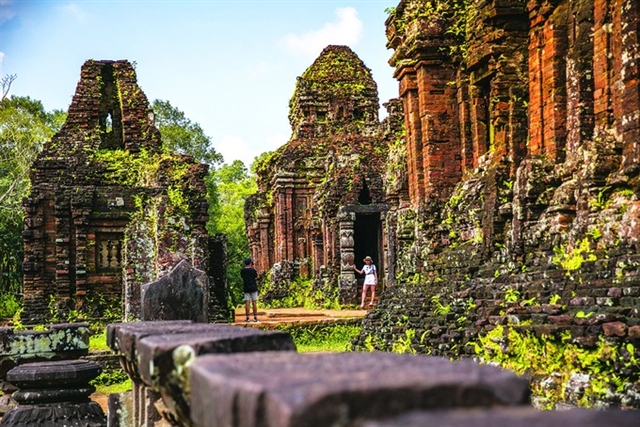Innovated services help lure tourists to Mỹ Sơn
Culture - Ngày đăng : 15:56, 18/10/2024
 |
| The Mỹ Sơn sanctuary was recognised as a world cultural heritage site by UNESCO in 1999. VNA/VNS Photo Lưu Trọng Đạt |
QUẢNG NAM — The Mỹ Sơn Sanctuary World Heritage Management Board has paid much attention to innovating services to attract visitors, particularly foreign ones.
In the first half of this month, the site welcomed nearly 13,700 visitors, mainly international visitors, bringing the total number of visitors to the world heritage site in the central province of Quảng Nam to nearly 352,000 in more than nine months.
During the period, Mỹ Sơn earned nearly VNĐ60 billion in revenue, an increase of nearly 30 per cent over the same period last year, and approximately equal to the revenue of the years before COVID-19.
Head of the Mỹ Sơn Sanctuary World Heritage Management Board Nguyễn Công Khiết said that in addition to the main product of the ancient tower groups, they launched art programmes such as Mỹ Sơn Legendary Night, folk art performances, traditional Chăm Pa dances at the foot of the ancient towers, which are considered unique tourism products of Mỹ Sơn.
Many valuable images, documents, and artifacts that have been collected, excavated, and restored are introduced to visitors.
To improve service quality and preserve heritage, the management board has coordinated with Indian experts to build an additional exhibition house and digitise many artifacts found during excavation and archaeology in the heritage area.
It has added Italian and Spanish languages to its audio guide, so now, it is available in eight languages - Vietnamese, Korean, Japanese, Chinese, French, English, Italian, and Spanish.
Visitors only need to enter the ticket code or scan the QR code with the "Mỹ Sơn Relics" application on the App Store or CH Play, the Mỹ Sơn temple complex with 40 mysterious stories corresponding to 40 stops will take visitors to the magical world of Mỹ Sơn on a digital platform.
Besides, to create harmony with nature and the space of the heritage site, along with moving service facilities away from the core area of the relic, the management board has invested in infrastructure items such as upgrading roads to the tower groups, stops, electric car services, new rest rooms at suitable locations, renovated clean water supply system, misting systems along pedestrian crossings.
Khiết said that from now until 2030, eco-tourism and cultural tourism products will be developed in the buffer zone and core area of the nearly 1,200-ha landscape forest area of the heritage.
To implement the plan, the management board will promote cooperation with localities in Việt Nam and major international markets. It will also effectively maintain the Huế - Đà Nẵng - Quảng Nam linkage, promoting the "Three localities - One destination" initiative and tighten linkage with major tourist hubs like Hà Nội and HCM City.
The Mỹ Sơn sanctuary was recognised as a world cultural heritage site by UNESCO in 1999. It comprises eight groups of 71 monuments built throughout the 7th to 13th century. Owed their spiritual origin from Hinduism of the Indian sub-continent, Mỹ Sơn temples were built to the Hindu divinities such as Krishna and Vishnu, but above all Shiva.
The first construction of Mỹ Sơn dated back to the 4th century under the reign of Bhadravarman for the worship of God Shiva-Bhadresvara. But later on, the temple was destroyed.
At the beginning of the 7th century, King Sambhuvarman had it rebuilt. Each new monarch came to Mỹ Sơn after his accession to the throne for the ceremony of purification and to present offerings and erect new monuments, which explains why Mỹ Sơn was the only place where Cham art flourished without interruption from the 7th to 13th century.
According to the UNESCO, conservation of the Mỹ Sơn monuments began in the early part of the 20th century soon after their discovery in modern times by French archaeologists. As a result of wars, many tower temples were damaged. However, preservation work has been carried out and the remaining tower temples have been maintained and are well-preserved. — VNA/VNS
